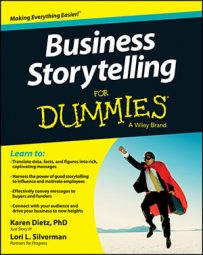Based on the story’s key message of make something happen, what is the transition from it to an action statement and what specific actions need to follow from this? Like many stories, action steps depend on audience. For each audience, here’s how to weave the action steps into the key message:
Government agencies and other organizations: “You, too, can make it happen. Come join us. And don’t hesitate to download the toolbox on our website. It’s full of information for agencies about what we learned that works. If your organization has a resource we don’t know about, please share that with us.
“To attend our next meeting, give us your card and we’ll invite you. And talk to Barbara in the back of the room if you have more questions. We look forward to working with you!”
Philanthropists: “You, too, can make it happen. Come join us. We invite you to become part of San Diego Grantmakers and our philanthropic community. To attend the next Homelessness Working Group meeting or participate in an upcoming Grantmakers’ event, give us your card and we’ll call you.
“Talk to Barbara in the back of the room if you have more questions about the coalition’s work. And don’t hesitate to contact us if you want to talk with any of our members about our organization. We look forward to working with you!”
Legislators: “You, too, can make it happen. Come join us. Don’t hesitate to download the toolbox on our website. It’s full of information about what we learned that works. Your actions on legislation now and in the future will shape public/private partnerships and the ability of philanthropy to help people for years to come.
“When legislation is being considered on public/private partnerships, remember what happened here in San Diego. Support collaborative ventures that benefit families and communities and deliver services more effectively while protecting state budgets. If you have questions or want to share ideas, please talk with us before you leave. We look forward to these conversations!”
Our work with this story isn’t done yet. It needs to be condensed to a few short paragraphs. Now’s the time to start slashing anything that seems extraneous. How do you pick and choose? By asking yourself two questions:
What’s absolutely essential that must survive?
What’s the emotional core of the story that must be kept at all costs?
Do you have to make some sacrifices when doing this? Absolutely. Can a story be cut too much? Yep. If you find yourself in that position, add a few pieces back in so it remains compelling.

